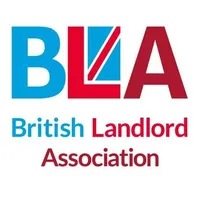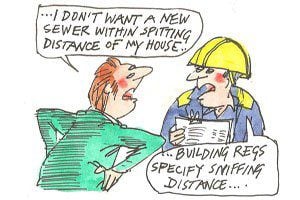
If you are a landlord looking to take on an HMO or a tenant moving into one, this bog may help you.
What is an HMO property?
What is an HMO property? is a common question many new investors ask. So, let us explore its meaning to its full extend so you have a better understanding.
It is important to discuss the key differences between HMOs and other residential rental properties, too.
House in multiple occupation is typically used by single people who may be working away from home on a long contract etc. It also offers the financial advantage that the cost of living is much lower than renting a whole house.
Many houses with multiple occupation are used for student accommodation as they offer the service and benefits that are ideal for them which are:
Fewer responsibilities
can live as separate households
Usually, no utility bill to worry about
Fully furnished
Rent is much lower
Private landlords offer terms for shorter periods
However, many types of accommodation could be considered an HMO. These may include, but are not limited to:
- Hostels
- Lodgings
- Buildings usually a house which has several bedsits with some shared facilities
- Shared house
- Buildings having flats with their own facilities, but are not self-contained
- Private halls of residence
- Blocks of converted flats
- Employee accommodation
- House with Refuges
As you can see, the term has a broad application. Generally, the following make up could be considered an HMO is a property that is occupied by three or more renters, who form more than one household and share facilities such as a bathroom, kitchen, and toilet.
Households in this context are considered as family members living together or single people living alone.
What determines if a property is an HMO?
Properties must have four common features before they can be considered as an HMO and they are:
Occupants that are not forming a single household
The property is the occupants main and only residence
The accommodation is being used only for residential purposes
One of the occupants must be paying rent
The above are the typical features that apply to individual flats and houses, but different rules apply when considering whole converted blocks.
The above conditions must be met before a property to be legally considered an HMO. Alternatively, the local authority can declare a property an HMO.
How do HMOs differ from other rental properties?
The health and safety standards in these type of properties are high as the potential risk of fire is high too. For and local authorities ensure all landlords adhere to the rules and standards that apply to HMOs.
The Environmental Health Department in the council take tenant’s complaints and will demand the landlords to rectify any disrepair or safety breach. Landlords who do not comply are frequently prosecuted by the council.
The council have the legal powers to take control of managerial duties of an HMO themselves through the courts.
What standards need to be kept in HMOs?
As mentioned in the section above, HMO landlords need to keep on top of health and safety issues to remain compliant and avoid the local authority prosecuted for non-compliance with the regulations.
Important things a landlord needs to keep in mind when managing HMO houses are:
Gas safety – annual checks
Electrical safety – checks to be carried out every five years
Fire safety – smoke and carbon monoxide alarms fitted and maintained
Rubbish disposal facilities provided
- Adequate cooking, cleaning, and washing facilities provided and maintained
- Communal areas to be kept clear and clean
- Managing overcrowding issues
- Licensing
Do all HMOs need licensing?
No, not all. Licensing may be needed when you have:
Occupants that are not forming a single household
The property is the occupants main and only residence
The accommodation is being used only for residential purposes
One of the occupants must be paying rent
If you are in doubt whether a property is an HMO, contact your local council and find out.
Reclaim rent – Rent repayment orders
A tenant can apply to a tribunal to reclaim some of the rent if the landlord has been prosecuted by the council for running an unlicensed HMO.
A Landlord can appeal rent repayment orders and many have successfully managed to do so successfully.
If a property were not licensed when it should have, the landlord could be ordered to repay rent under the rent repayment order legislation.
HMO Minimum Room Sizes
At the same time as the licensing changes, guidelines for minimum HMO room sizes were also introduced with landlords needing to adhere to the following guidelines:
Obligation to notify the local housing authority of any room in the HMO with a floor area of less than 4.64 square metres.
Ensure that the floor area of any room in the HMO used as sleeping accommodation by one person aged over 10 years is not less than 6.51 square metres.
Ensure that the floor area of any room in the HMO used as sleeping accommodation by two persons aged over 10 years is not less than 10.22 square metres.
Ensure that the floor area of any room in the HMO used as sleeping accommodation by one person aged under 10 years is not less than 4.64 square metres.
Ensure that any room in the HMO with a floor area of less than 4.64 square metres is not used as sleeping accommodation.
As part of these regulations, there were also new rules on overcrowding for landlords to comply with:
Where any room in the HMO is used as sleeping accommodation by persons aged over 10 years only, it is not used as such by more than the maximum number of persons aged over 10 years specified in the licence.
Where any room in the HMO is used as sleeping accommodation by persons aged under 10 years only, it is not used as such by more than the maximum number of persons aged under 10 years specified in the licence.
Where any room in the HMO is used as sleeping accommodation by persons aged over 10 years and persons aged under 10 years, it is not used as such by more than the maximum number of persons aged over 10 years specified in the licence and the maximum number of persons aged under 10 years so specified.
HMO Licensing
HMO licensing was first introduced in Scotland in 2000.
To be granted a licence under the scheme, properties must meet certain standards, such as the presence of smoke detectors and fire doors.
These provisions were included in response to a fatal fire at a student flat in Glasgow, which had no working smoke detectors and metal bars preventing escape through a window.
HMO schemes have been later introduced to other parts of the UK, though the legal definition of what constitutes an HMO varies between Scotland, Northern Ireland, and England & Wales.
Generally, In the United Kingdom, an HMO has the following characteristics:
at least 3 tenants live there, forming more than 1 household and
toilet, bathroom, or kitchen facilities are shared between tenants.
Definitions of what constitutes an HMO and a household are set out in the law for each legal jurisdiction.
Gas Safety Certificate
All residential properties with gas appliances require a valid gas safety certificate that meets the gas safety standards. The gas safety check must be done every year as this is part of the gas safety regulations.
HMO produced average yields of 8.9% – the highest of all buy-to-let property types for this purpose they are popular amongst residential property investors.
The Brtish landlords association run online HMO courses which are about 1 hour and 30 minutes long. You can access them through The BLA course website.
Top read blogs:
Landlord Electrical Safety inspection report (EICR) 2021 Guide




